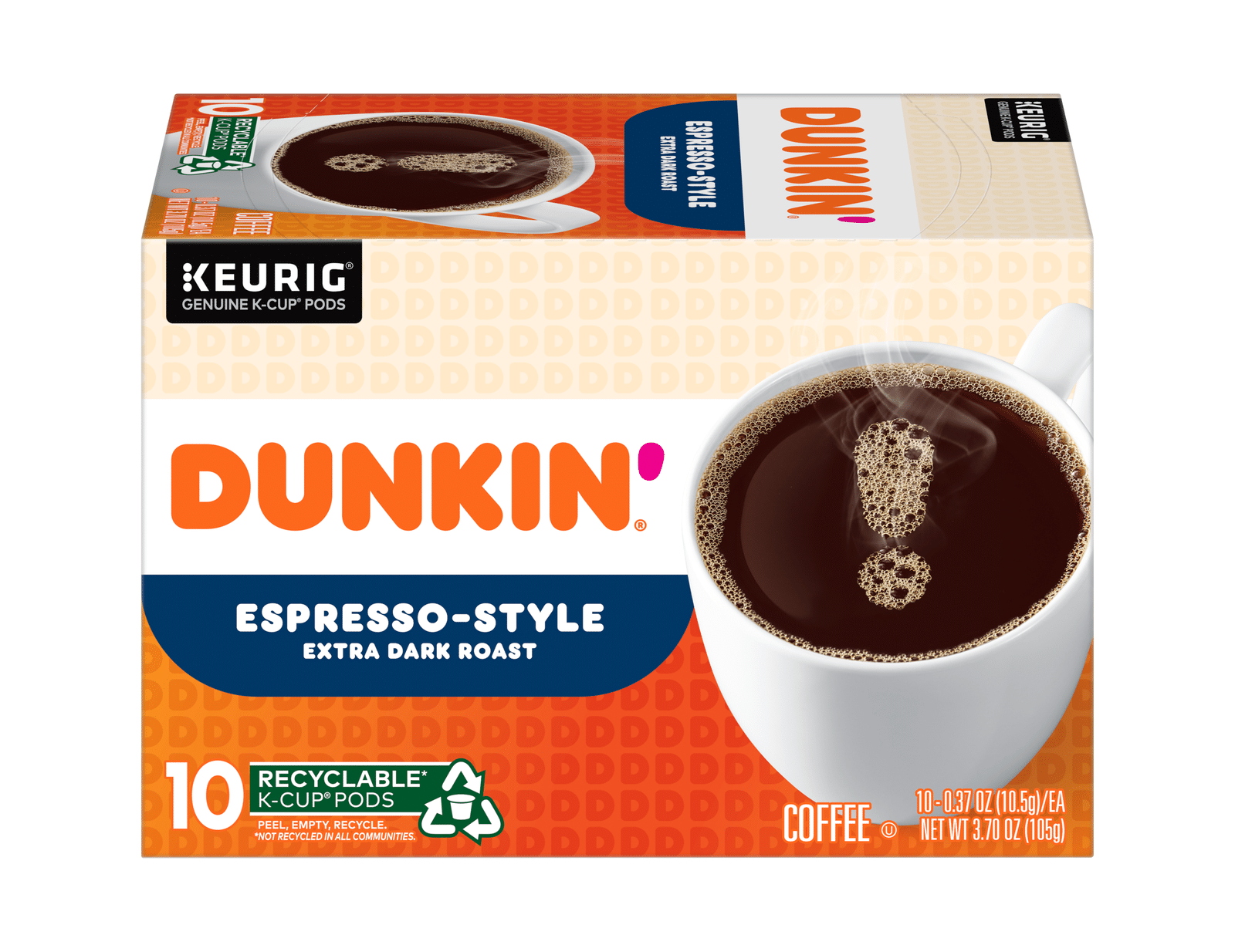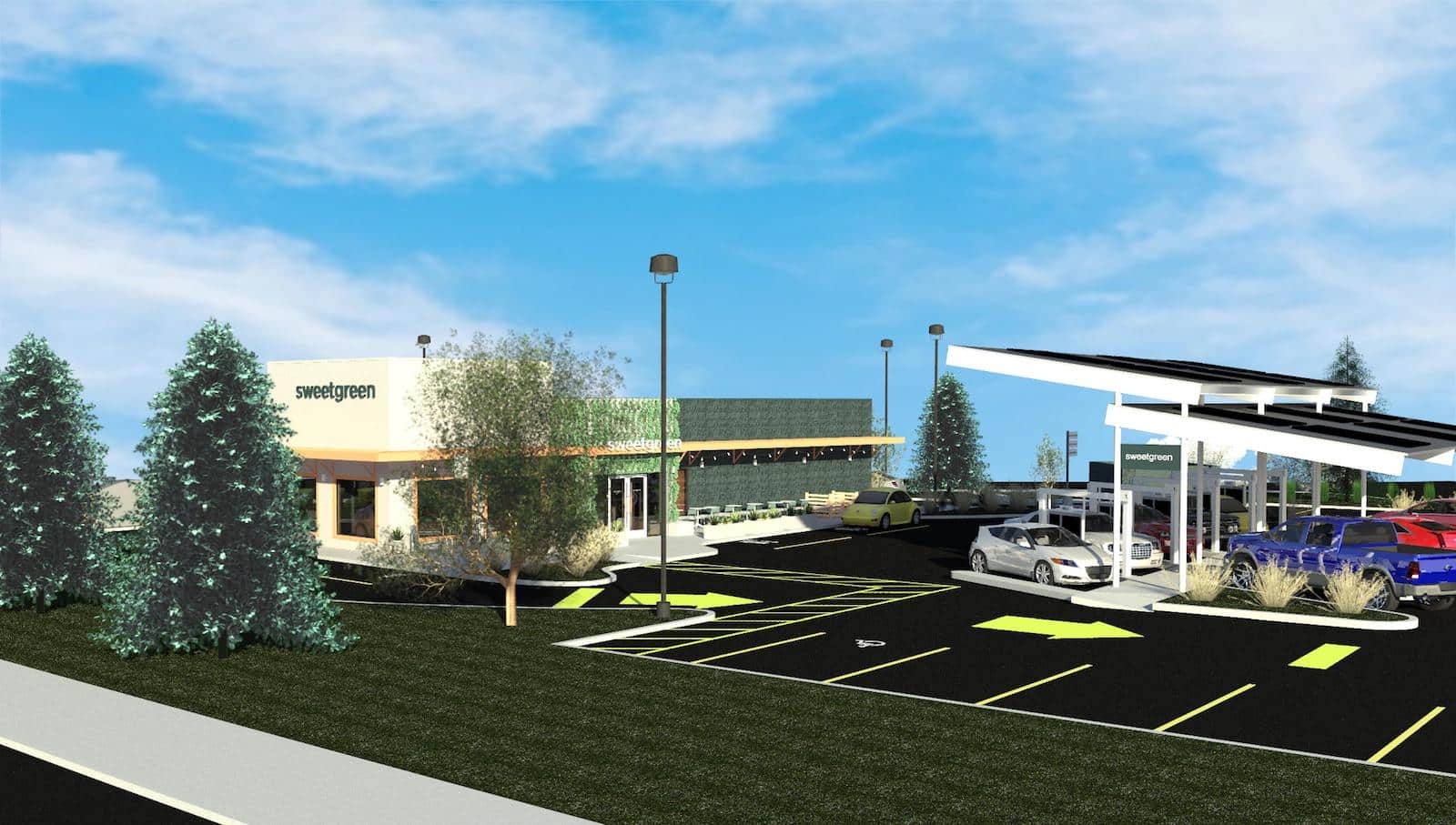Sweetgreen’s entry into the rapidly crowding drive-thru world will begin in Schaumburg, Illinois. The fast casual plans to debut its first “sweetlane” concept within the next year, it said Wednesday. The pilot store will boast Sweetgreen’s typical dine-in offerings, but with a dedicated drive-thru lane outside “to increase convenience for digital customers.”
Like Chipotle’s “Chipotlane,” the feature won’t be a standard order-at-the-board setup. Customers will need to place orders in advance exclusively through Sweetgreen’s digital platforms. Additionally, the space will include a round observation window for customers driving by to watch prep as they pick up orders. Akin, in concept, to seeing employees make food down an assembly line. Pickup orders can also be placed inside the restaurant, Sweetgreen said.
“We are always innovating to provide more convenience for our customers, which is why we’re excited about our first ‘sweetlane’ concept in Schaumburg,” added Nicolas Jammet, co-founder and chief concept officer. “Digital customers are our most habitual users and we believe this new format will provide us with more options to connect people to real food.”
Sweetgreen, which went public in November, appreciates a customer base plenty familiar with digital outlets. Its digital revenue percentage last year was 67 percent, and “owned digital” was 46 percent. Those numbers were 75 and 56 percent, respectively, in 2020.
Similar to Chipotle, the “owned digital” aim is one the brand is actively chasing as costs climb industry-wide and prices rise. Sweetgreen’s restaurant-level margins were 13 percent in 2021, rebounding from negative 4 percent in 2020. It developed a native delivery experience two years ago alongside marketplace options—an effort to capture more data (tailor future communications and incentives) and protect profitability, and also to control brand experience.
Two-thirds of Sweetgreen’s digital sales in 2021, as noted, flowed through manual avenues, app and website, which CEO Jonathan Neman said in March enabled the brand to deliver a seamless and personalized experience and to create digital-exclusive menu options and even a subscription program, the latter of which tested in January (spend $10, get a $3 credit). Also, to court frequency, larger order value, and gain access to pattern trends.
“We have a clearly defined strategy to drive owned digital acquisition, make our app the best way to order Sweetgreen, offer the best value in app, and enable exclusive experiences, including our seasonal menu, personalized promotions, curated collections, and chef and influencer collaborations,” he said.
The “sweetlane” brings those goals together with an added punch of convenience.
[image source_ID=”132123″]
Sweetgreen said there’s plenty of evidence to support the direction. When it gets customers into digital channels, historically, they come in at least 1.5 times more often. And they spend 20 percent more. Once they evolve into a “two-channel customer,” they show up 2.5 times more.
This is all evolving as Sweetgreen’s development phases up as well. The concept, created 15 years ago by three college friends, ended 2021 with 150 locations. Neman noted in March it’s on track to double in the next three to five years and reach 1,000 restaurants by decade’s close.
Sweetgreen expects to open at least 35 venues this year, including in two to three new markets. Thirty-one stores debuted last year. And the urban versus suburban split (13 compared to 18 in 2021) could play a role in “sweetlane’s” potential. Just take a look at what’s happening with Starbucks coming out of COVID in regards to access points. Or why Shake Shack is targeting 10 drive-thrus by year’s end.
Chipotle, as a comparison again, said in February it was targeting growth in towns of 40,000-plus people or so given recent openings. These “small-town” locations delivered unit economics “at or better” than traditional builds, CEO Brian Niccol told investors. But equally important, they lend themselves to the order-ahead pickup window “Chipotlanes,” which continue to outperform units without them. They generate higher volume (stores open with about 15 percent higher sales) and skew higher digital business, also about 10–15 percent better, or closer to 55 percent of mix. With an incremental investment cost of $75,000–$85,000, it’s “by far, a superior return,” CFO Jack Hartung said in Q3. Chipotlanes generate cash-on-cash returns in the 65–70 percent range within a couple of years. And, notably, the model favors margin-friendly carryout versus delivery.
All told, it’s why Chipotle expects to bring 235–250 restaurants to market in 2022, and more than 80 percent of those will be equipped with a Chipotlane. Last year, 81 percent (174) of 215 openings had one.
Sweetgreen’s total revenue in 2021 was $340 million—a record high for the company, and a 54 percent jump, year-over-year. Average-unit volumes climbed from $2.2 to $2.6 million.

